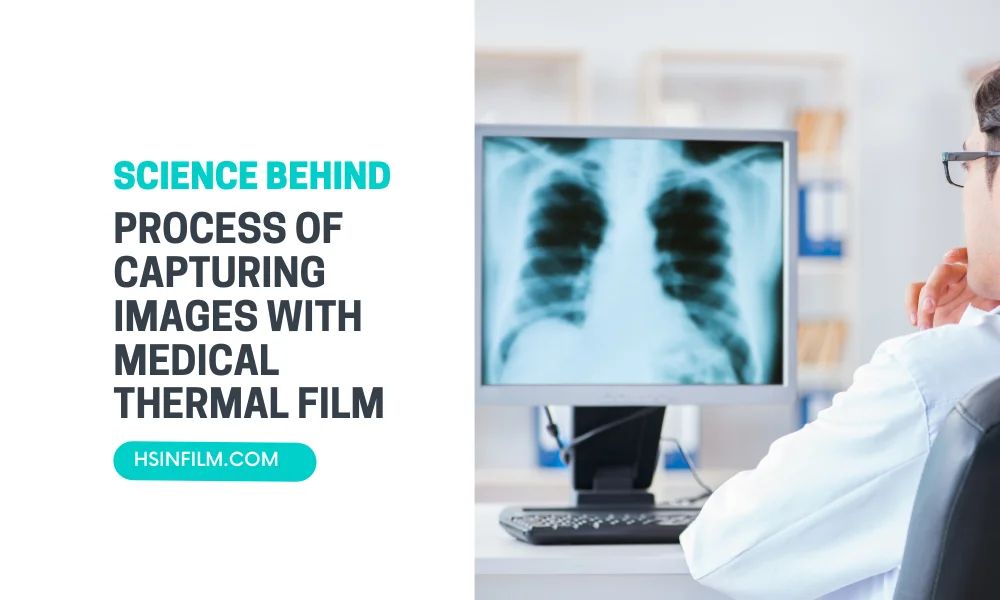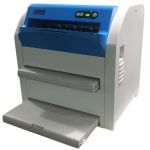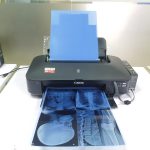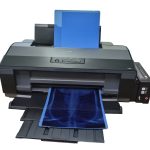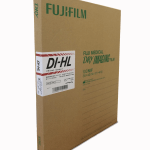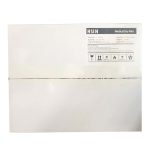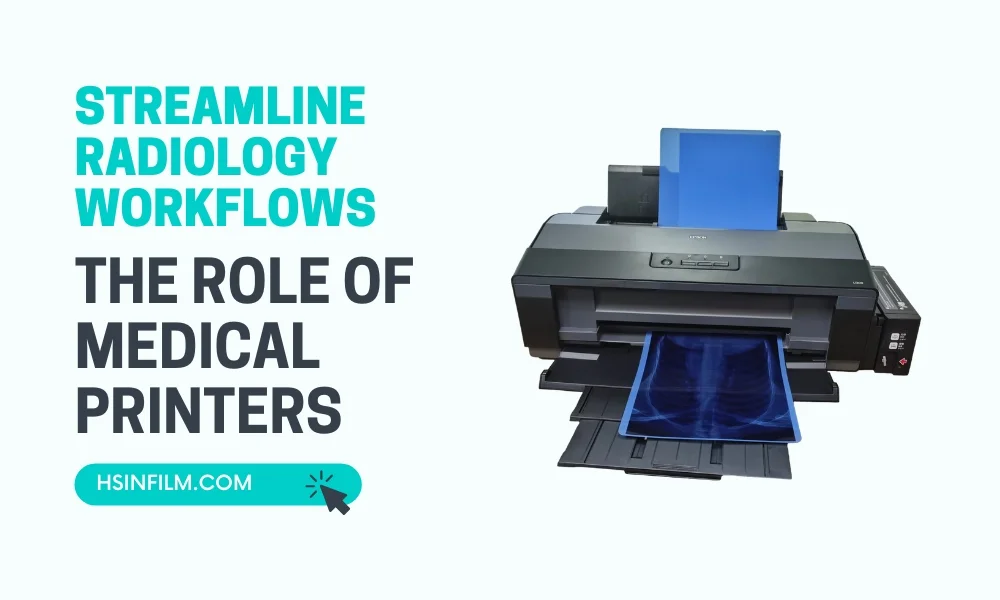Ever wondered how medical thermal film reveals complicated details within the human body, aiding in crucial diagnoses? In this blog post, we’ll unravel the science behind medical thermal film and explore the fascinating technology that allows medical thermal film capture precise images in the realm of medical imaging.
Table of Contents: How Medical Thermal Film Captures Precise Images
Understanding Medical Thermal Film
What is Medical Thermal Film?
Medical thermal film is a type of film used in medical imaging to create high-quality images. It is commonly used in radiology to print images from digital sources such as X-rays, CT scans, and MRIs. The film provides a physical copy of the image, which can be used for diagnosis, treatment planning, and patient records.
Components of Medical Thermal Film
Medical thermal film consists of several layers that work together to capture and display images. These layers include:
- Base Layer: Provides support and stability to the film.
- Thermal Layer: Contains chemicals that react to heat to form an image.
- Protective Layer: Protects the thermal layer from physical damage and environmental factors.
You can check our HSIN Medical Thermal Film
The Science Behind Medical Thermal Film

Thermal Printing Technology
The key to medical thermal film’s ability to capture precise images lies in thermal printing technology. Unlike traditional printing methods that use ink, thermal printing relies on heat to create images. Here’s how it works:
- Heat Application: A thermal printhead applies heat to the film. The printhead contains tiny heating elements that can be precisely controlled.
- Chemical Reaction: The heat causes a chemical reaction in the thermal layer of the film. This reaction forms the image by changing the color of the film in specific areas.
- Image Formation: The resulting image is a high-resolution, black-and-white or color representation of the original digital image.
Advantages of Thermal Printing
Thermal printing technology offers several advantages for medical imaging:
- High Resolution: The precise control of the heating elements allows for high-resolution images, essential for accurate diagnosis.
- Speed: Thermal printers can produce images quickly, which is crucial in medical settings where time is often of the essence.
- Durability: The images produced are durable and resistant to fading, ensuring they remain useful for long-term patient records.
Process: Medical Thermal Film Capture Precise Image
Image Acquisition
The first step in using medical thermal film is acquiring the digital image. This can be done through various imaging modalities, such as:
- X-rays: Used to view the internal structure of bones and detect fractures or infections.
- CT Scans: Provides detailed cross-sectional images of the body.
- MRIs: Offers high-contrast images of soft tissues.
Digital to Film Conversion
Once the digital image is acquired, it needs to be converted to a format suitable for printing on thermal film. This involves:
- Image Processing: Adjusting the brightness, contrast, and other parameters to ensure the image is clear and accurate.
- Data Transfer: Sending the processed image data to the thermal printer.
Printing the Image
The final step is printing the image onto the thermal film. This involves:
- Film Loading: Loading the medical thermal film into the printer.
- Printing: The thermal printer applies heat to the film, creating the image through the chemical reaction in the thermal layer.
- Quality Check: Ensuring the printed image meets the required standards for clarity and detail.
Applications in Medical Diagnosis
The applications of medical thermal film are diverse and extend across various medical fields. Here are a few scenarios where it plays a pivotal role:
1. Breast Health
Thermal imaging aids in the early detection of breast abnormalities, potentially assisting in breast cancer diagnosis. It can reveal changes in temperature associated with abnormal blood vessel growth, a hallmark of some breast cancers.
2. Pain Management
It is used to identify sources of chronic pain and inflammation, helping physicians develop targeted treatment plans. By pinpointing areas of inflammation, healthcare providers can administer more precise interventions.
3. Infection Detection
Thermal imaging can assist in detecting infections, particularly in cases of diabetic foot ulcers. Elevated temperatures in the affected area can indicate an infection, prompting timely intervention.
4. Neurology
In neurology, thermal imaging can aid in the assessment of conditions such as carpal tunnel syndrome and complex regional pain syndrome (CRPS). It helps identify temperature variations that may be associated with these disorders.
Benefits of Using Medical Thermal Film
Accuracy
The high resolution and clarity of thermal film images ensure accurate diagnosis and treatment planning. This accuracy is vital for detecting subtle abnormalities that might be missed with lower-quality images.
Durability
Medical thermal film is durable and resistant to environmental factors such as light and humidity. This durability ensures that the images remain intact and usable for long periods, making them ideal for patient records.
Convenience
Having a physical copy of an image can be more convenient in certain situations. For example, it can be easier to review a physical film during consultations or when sharing information with other healthcare providers.
Challenges and Limitations
While medical thermal film offers numerous advantages, it’s important to acknowledge its limitations. One challenge is the need for specialized equipment and trained personnel. Additionally, thermal imaging may not always provide the level of detail offered by other imaging methods like MRI or CT scans, particularly in cases requiring precise anatomical images.
Cost
One of the challenges of using medical thermal film is the cost. The thermal printers and the film itself can be expensive. However, the benefits in terms of accuracy and durability often outweigh the costs.
Storage
Storing physical films requires space and proper environmental conditions to prevent damage. Digital storage solutions can mitigate some of these challenges by providing a backup of the images.
Training
Healthcare providers need to be trained in using thermal printers and interpreting the images correctly. This training ensures that the images are used effectively in patient care.
The Precision of Thermal Mapping
What is Thermal Mapping?
Thermal mapping is a critical process used in various industries to ensure that temperature-sensitive environments maintain the required conditions. It involves the systematic measurement and recording of temperature distributions within a given space over a specified period. This process is essential for environments such as pharmaceutical storage, food processing, and healthcare facilities, where precise temperature control is crucial.
Importance of Precision in Thermal Mapping
The precision of thermal mapping is vital for several reasons:
- Maintaining Product Quality: In industries like pharmaceuticals and food, maintaining the right temperature is key to preserving product quality and safety. Precise thermal mapping ensures that all areas within a storage or processing facility meet the required temperature standards.
- Compliance with Regulations: Regulatory bodies often require detailed thermal mapping to ensure that companies comply with health and safety standards. Accurate thermal mapping helps in meeting these regulatory requirements and avoiding potential penalties.
- Preventing Spoilage and Waste: Accurate temperature control helps prevent spoilage and waste of sensitive products. By precisely mapping temperature variations, businesses can identify and rectify any areas that are not within the desired temperature range, thus reducing product loss.
How Does Thermal Mapping Work?
Thermal mapping involves placing sensors throughout the environment being monitored. These sensors continuously record temperature data over a set period. The collected data is then analyzed to identify any temperature variations and ensure that the entire area is maintaining the correct conditions.
Advanced Technology for Enhanced Precision
Modern thermal mapping uses advanced technology to achieve high levels of precision:
- High-Resolution Sensors: These sensors provide detailed temperature readings, capturing even the slightest variations.
- Data Loggers: Devices that record temperature data over time, ensuring comprehensive monitoring.
- Software Analytics: Sophisticated software analyzes the recorded data, highlighting any deviations from the desired temperature range and providing actionable insights.
Benefits of Precise Thermal Mapping
- Enhanced Quality Control: Ensures that all areas within a facility meet stringent temperature requirements, maintaining product integrity.
- Improved Operational Efficiency: By identifying and addressing temperature inconsistencies, businesses can optimize their operations and reduce energy consumption.
- Increased Compliance: Helps meet regulatory standards, ensuring that products are stored and processed under safe and compliant conditions.
The precision of thermal mapping is crucial for maintaining the quality, safety, and compliance of temperature-sensitive products. By leveraging advanced technology and detailed data analysis, businesses can ensure that their environments are consistently within the required temperature ranges, leading to improved product integrity and operational efficiency.
Thermal Film and Disease Detection
Delve into the specific diseases and conditions that can be detected or monitored through thermal imaging. Provide examples of how abnormal heat patterns may indicate conditions such as arthritis, vascular disorders, or nerve damage.
Ethical Considerations in Thermal Imaging
Examine the ethical implications of thermal imaging in healthcare, including issues related to patient privacy, informed consent, and the responsible use of thermal imaging technology.
The Multidisciplinary Approach to Thermal Imaging
Illustrate how thermal imaging integrates into a multidisciplinary approach to healthcare. Showcase examples of how medical professionals from various fields collaborate to interpret thermal images and provide comprehensive patient care.
Technological Advancements
The field of thermal imaging is continuously evolving, with ongoing technological advancements enhancing its capabilities. Researchers are working to improve image resolution, reduce equipment size, and make thermal imaging even more accessible in various healthcare settings.
Future Prospects
As technology advances, we can anticipate that medical thermal film will continue to play a crucial role in healthcare. It holds the potential to become an even more versatile tool, contributing to early disease detection, personalized medicine, and improved patient care.
Final Words
In conclusion, the science behind medical thermal film is a captivating blend of heat sensitivity and cutting-edge technology. It enables healthcare professionals to see beneath the surface and detect anomalies that might otherwise remain hidden. As we witness ongoing advancements, the future of medical thermal film is filled with promise, offering a brighter outlook for medical imaging and diagnosis.
Disclaimer: This article is for informational purposes only and does not constitute medical advice. Consult with a healthcare professional for personalized medical guidance.
